Fencing is a big job- make sure you aren’t making any of these fencing mistakes before you build your fence to save yourself some time and money!
When we first bought our current homestead it was 9.5 acres of completely un-fenced land.
This site contains affiliate links. If you make a purchase using one of these links, I may earn a commission. Please see my disclosure page for more information about cookies collected and our privacy policy.
Before we moved in we had to fence in an area for chickens and one for goats. And over the years we have added additional pastures, perimeter fences, and a large fenced garden.
We’ve learned a few things as we went from fence building novices to, well, I won’t say pros…but we are much more knowledgeable when it comes to constructing fences the right way- the first time!
Sometimes it seems like a never ending job, so in order to save yourself some time and money- check out these 6 fencing mistakes.
Are you making any of them?
6 Fencing Mistakes That Cost You Time and Money
Mistake #1: Placing Gates in the Wrong Location
So let’s say you’ve spent all your free time fencing in whatever it is you are fencing. You’ve dug in posts. You’ve stretched wire. You’ve cemented in your gate posts and hung the gates. You are super proud of all your hard work. Then you start using the area that is now fenced in and you realized just how inconvenient your gates are.
Maybe they are smack dab in the exact area where water and mud gather after storms.
Maybe you want to walk you tiller from your shed to the newly fenced in garden and you have to go WAY out of the way to get there.
Maybe you didn’t quite plan all scenarios and you now you can’t fit a tractor in through the gate to deliver hay or bush hog or whatever else you may need.
Before you start any fencing project make sure you have thought out exactly where you need your gates, what they will be used for, and if everything will work as they are supposed to.
Because once those gate posts are secured and the fencing stretched…you really don’t want to move your gate. It’s not impossible to do, but it’ll cost you a lot of time and money and cause a headache or two.
Mistake #2: Incorrectly Spaced Posts
Now let’s say you are crunching numbers for your new fence, and you figure you will save a few bucks by spacing the posts just a little farther then they ought to be spaced.
This might work okay for a non-working fence. But let me tell you, if you’ve got an animal inside that pasture, they will be sure to find those weak points in the fence.
You don’t want to spend your free time fixing a fence you just put up because the goat knocked it down again. And you don’t want to spend the money to insert new posts to help strengthen the wire. So if your fence needs posts every 8 feet, then put them every 8 feet.
Correct spacing will depend on the type of wire you are using. For example, with electric fencing posts can be spaced further apart than with a woven wire fence.
Mistake #3: Unsecured Anchor/Corner Posts
Corner posts are very important to the integrity of a fence. They bear a lot of the pressure, especially when constructing the fence.
If you don’t secure them to the ground and support them with braces or other anchors you will slowly see you fence start to cave in. Or your posts might even snap under pressure. And no one wants that.
Make sure your corner posts and your gate posts are deeply secured in the ground and properly braced.
Mistake #4: Not Checking for Underground Utilities
The other day the city was putting up new guard rails on our road. Sometime that morning our internet went out. Then later that day we went out to do some errands and came to the work crew digging every single guard rail post by hand.
And lots of new flags dotting the area showing where cable lines were running under the ground. Those guys looked thrilled to be using a manual post hole digger instead of their fancy post-drilling machine.
So make some calls before you plan your fence.
Make sure you won’t be cutting off your neighborhood’s utilities. Make sure you know where your own septic system is.
Because that is one fencing mistake you just don’t want to deal with!
Mistake #5: Not Paying Attention to Property Lines
Did you know that in some places, if a fence is placed on a property line incorrectly and no one contests it, after a while (years) that fence becomes the new property line? So if you don’t pay attention you could mistakenly give part of your land away to your neighbors.
On the flip side, do you want to take your fence down and move it over a few feet when you neighbor complains that you just fenced in part of his yard?
Or even worse, you could get a fine for accidentally fencing in public or government owned property.
If you are at all unsure as to where your property line is, then call a surveyor. It’ll cost less in the long run than making this fencing mistake.
Mistake #6: Choosing the Wrong Kind of Fencing for Your Needs
This is the big one. Choosing the wrong kind of fence is one of the worst fencing mistakes you can make.
If your goat can jump over, go through, or push down your fence. It is useless.
If your garden fence doesn’t keep large pests out. It is useless.
If your dog can escape his fence. It is useless.
If the coyotes that are preying on your livestock can get through your fence. It is useless.
There are a lot of choices. Wood posts. T-posts. Welded wire. Woven wire. Electric wire. Chicken wire. I’ve explained a few of those in Fence Options on the Farm.
Do a lot of research and make sure that the kind of fence you intend to build will do the job you intend it to do.
So there you have it, 6 Fencing Mistakes That Cost You Time and Money. Whether you are planning a fencing project in the future or mid-job, hopefully you can skip making these mistakes and have a strong, well-made fence that will last a lifetime.
Are you setting up a new homestead? Check out these articles:
How to Have the Most Productive Homestead Year
How to Build a Quick and Inexpensive Pallet Shelter
5 Tips for Creating a Self Supporting Homestead
Or check out my Homestead Goal Planner to help you build the homestead of your dreams in the time you have!

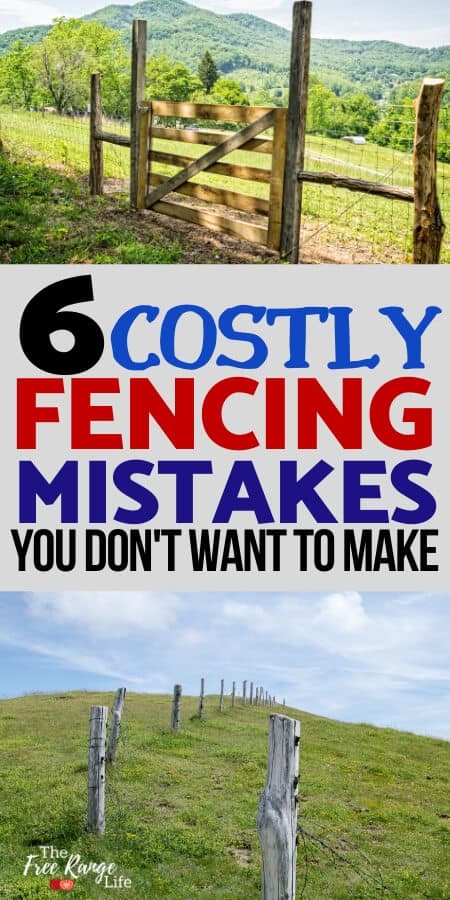
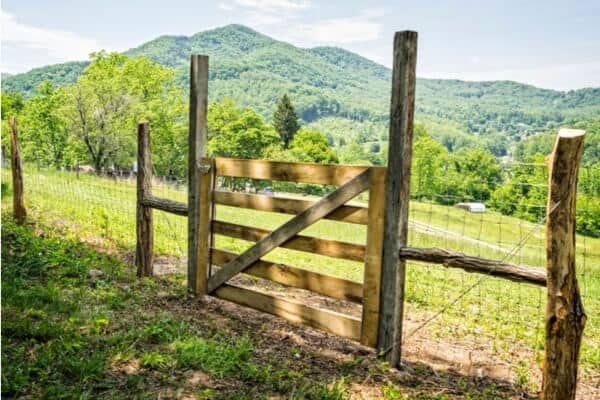
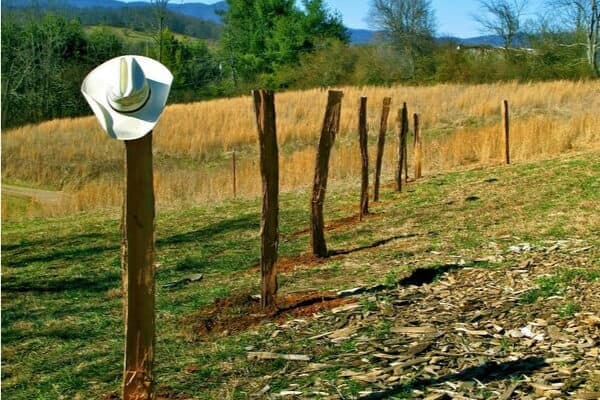
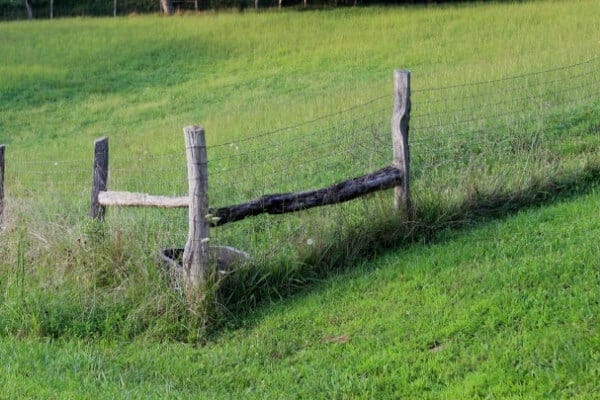
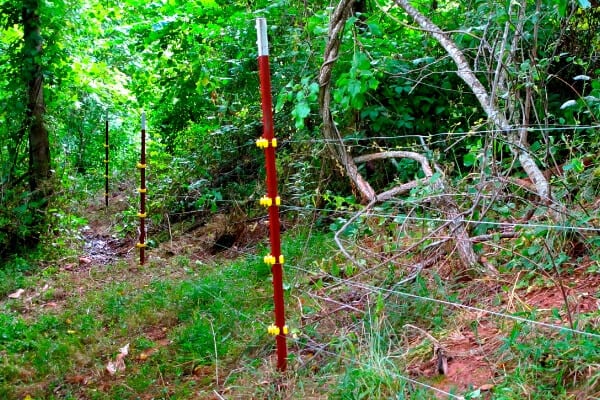

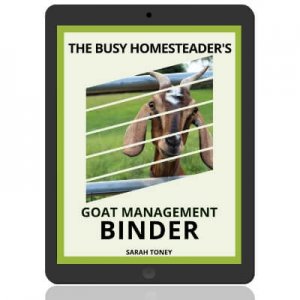

Another thing to consider is to use steel pipe (about 4 to 6 inches in diameter) set in concrete for corner posts. Then if there happens to be a wild fire you will still have the corner posts available and you can replace the rest of the fence much easier. This is especially important if you have livestock you wish to keep from roaming. I speak from experience.
great addition!
That is an excellent idea I 2nd that a mensely !!!
New fences stretch. So leave yourself an easy place to tighten your fence, and leave your staples loose or your T post wire ties lose so you can easily take up the stretch.
I didn’t realize how fortunate I was to get a penny a line post hole and 5 cents for a corner post hole when I was 6 years old…yes grew up building fence…descent article and better than learn as you go…guess biggest change I have seen is the higher cost and more high fence..aka deer proof here in Texas